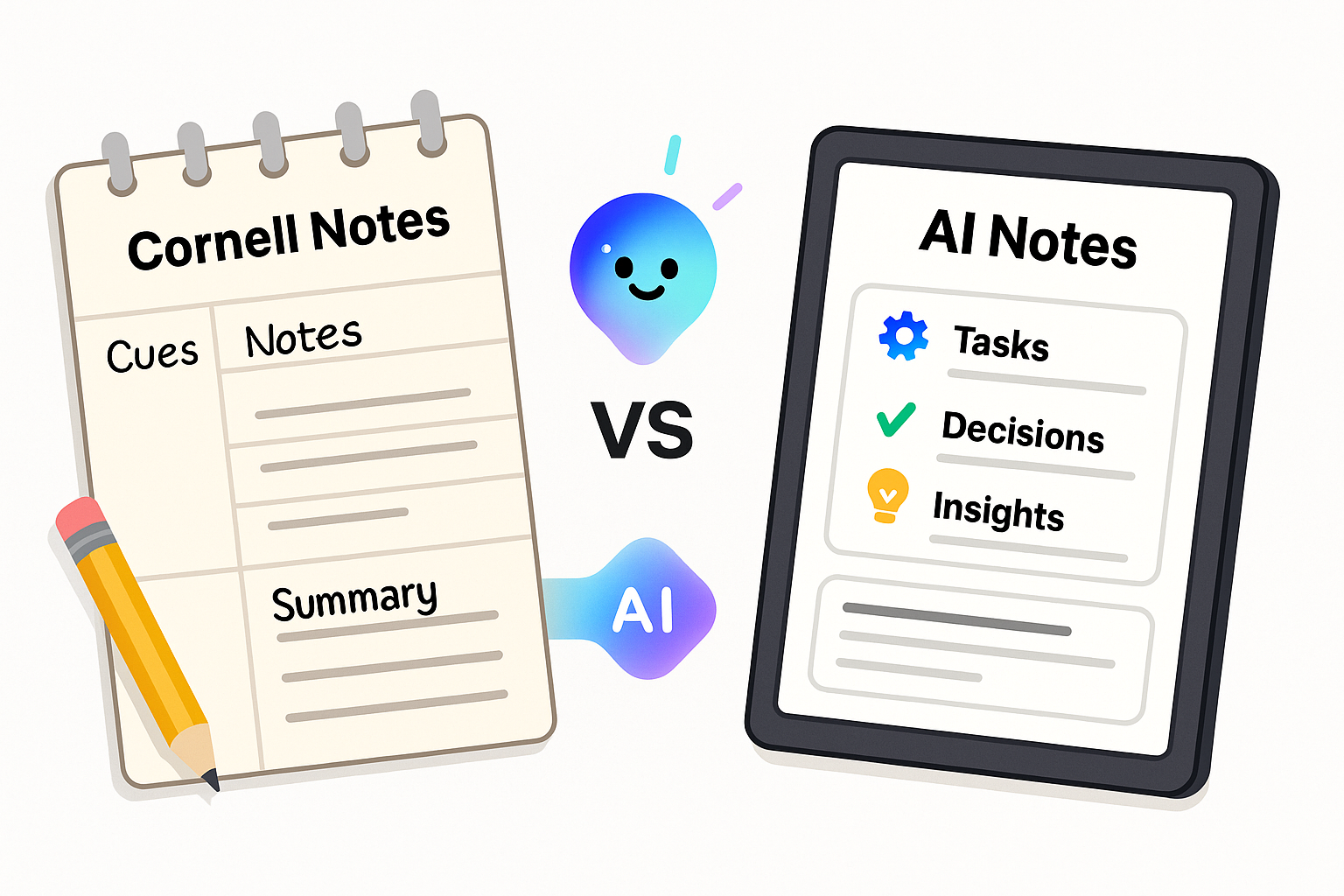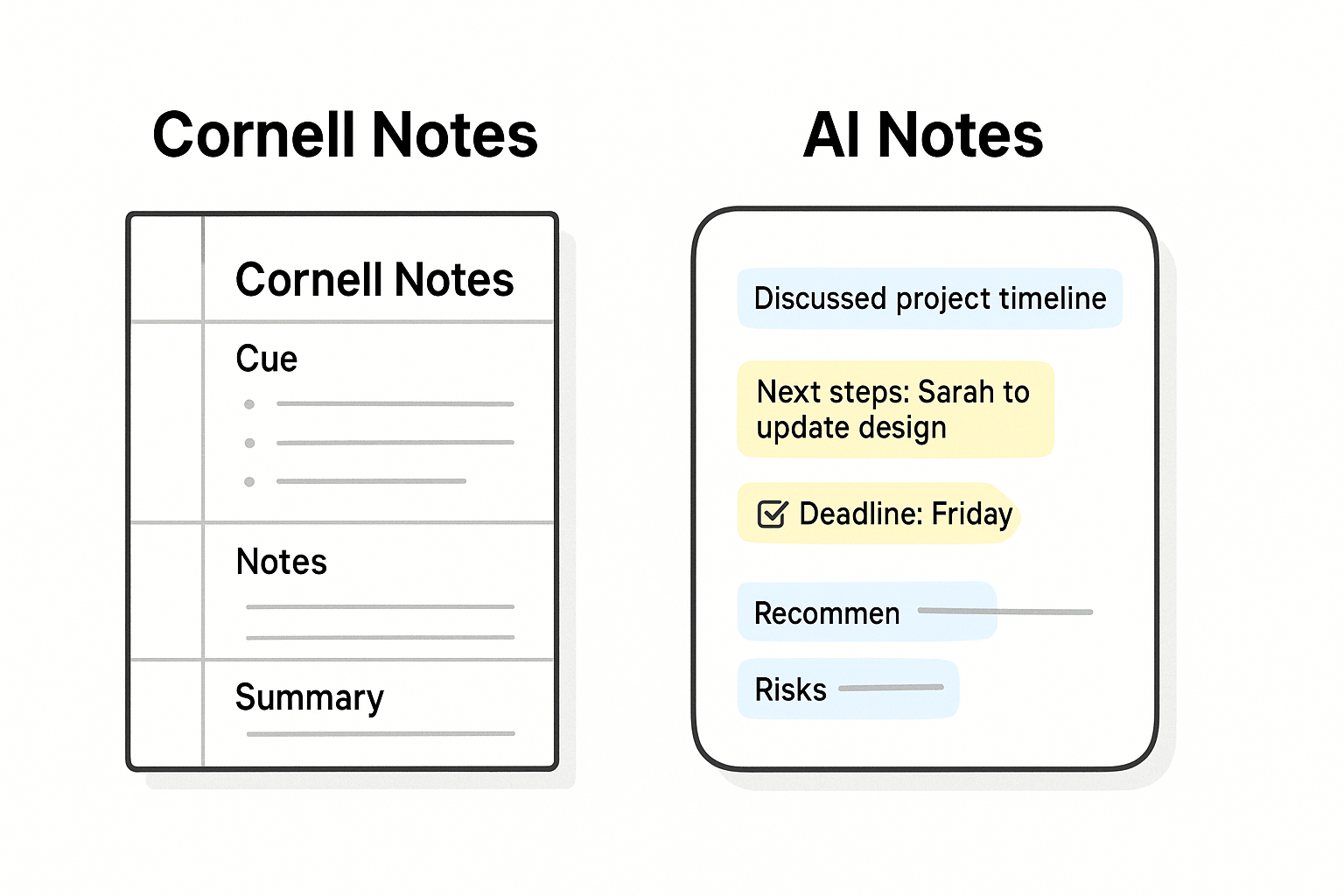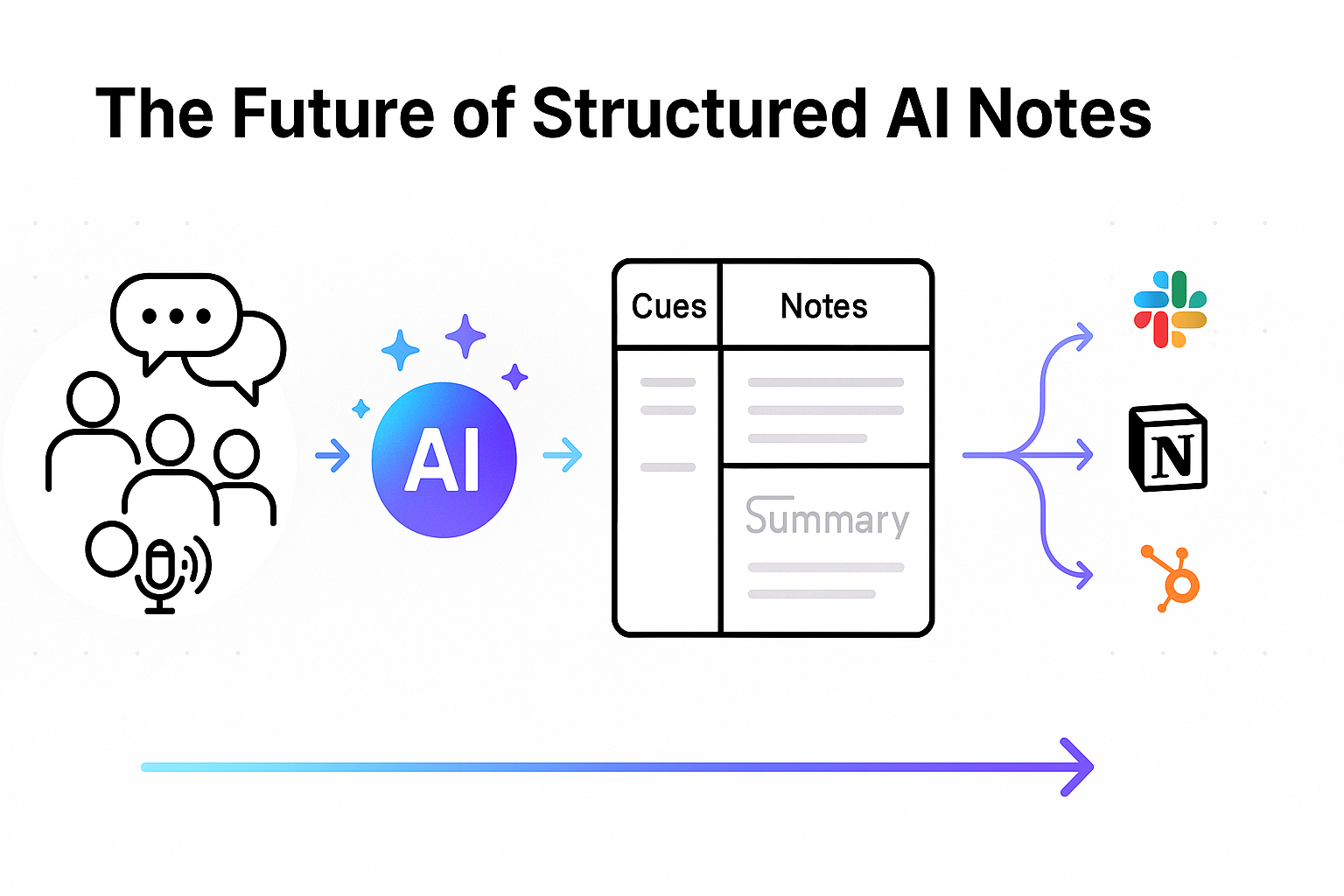 Sami AZ
Sami AZ
For decades, the Cornell note-taking method has been celebrated as one of the most effective ways to organize information. It is structured, disciplined, and rooted in cognitive science. But in 2025, work looks very different, meetings happen across time zones, updates flood through Slack and Notion, and information moves faster than ever before.
Teams are asking a new question: Does the Cornell system still work in an AI-powered workplace?
At its heart, Cornell Notes were built for clarity and retention. AI notes, on the other hand, are built for speed, automation, and collective memory. This article compares both, explores how they can complement each other, and shows why combining structure with automation helps modern teams achieve more.
Developed in the 1940s by Professor Walter Pauk at Cornell University, the Cornell note-taking method was designed to help students process lectures more efficiently. It breaks a page into three sections:
The method forces active engagement. You don’t just write down information, you interpret it, categorize it, and review it later.
The Cornell method aligns with key cognitive principles:
For individuals, Cornell Notes still work beautifully. But in team-based, fast-paced environments, they start to show cracks:
This is where AI notes enter the conversation, not to replace Cornell, but to evolve it.
AI meeting assistants like Klu use speech recognition, natural language processing, and contextual AI to transform conversations into actionable data.
Instead of typing notes, AI:
Essentially, AI handles the “record and summarize” phase, freeing teams to focus on decisions and creativity.
Cornell Notes are manual and structured. AI Notes are automated and dynamic.
With Cornell, the structure is deliberate, every box and margin has meaning. With AI, structure is inferred. Algorithms detect patterns and create sections like “Key Topics,” “Action Items,” or “Decisions.”
Cornell prioritizes learning and recall. AI Notes prioritize execution and collaboration.
In classrooms, the goal is to understand. In teams, the goal is to act, to make progress. AI meeting notes automatically assign tasks, tag people, and post updates to your workflow tools.
Cornell Notes train individuals to listen actively. AI Notes build collective intelligence, storing, searching, and surfacing insights across the organization.
You don’t just review your own notes; you can query your entire meeting history. Klu’s Deep Dive allows users to ask, “What did we decide about the Q4 campaign?” and instantly retrieve all related insights.
While AI can’t replicate human intuition, it can embody the Cornell method’s principles, clarity, summarization, and follow-up.
Here’s how:
This fusion of old and new means you get the reflective depth of Cornell with the efficiency of AI.

Modern tools are starting to emulate Cornell’s design inside digital environments.
For example:
The next step? Personalized AI summaries that adapt to your preferred structure. Soon, you’ll be able to teach AI your note-taking method, and it will follow it.

In a team environment, scalability matters more than perfection. AI notes ensure:
Flat notes might serve individuals, but dynamic AI-driven summaries empower organizations to move faster and smarter.
Q1: Are Cornell Notes obsolete now that we have AI?
Not at all. They still train attention and reflection. But AI automates the tedious parts, letting teams act faster.
Q2: Can AI replicate the structure of Cornell Notes?
Yes. Many AI tools now segment summaries into sections for key points, decisions, and action items, echoing Cornell’s structure.
Q3: How accurate are AI notes compared to manual notes?
AI accuracy depends on audio quality and context. Klu allows users to review and edit summaries to ensure precision.
Q4: Can I integrate Cornell-style thinking into digital tools?
Absolutely. You can design Notion or Klu templates that mirror Cornell zones while enjoying automation benefits.
Q5: How secure are AI-generated notes?
Tools like Klu comply with SOC 2 and GDPR standards, ensuring data is encrypted and access-controlled.
The Cornell method will always have value for those who want to think deeply. But in a world of hybrid meetings, distributed teams, and automation-first workflows, AI notes are becoming essential.
The future isn’t about choosing between structure and automation, it’s about combining them. With Klu, teams get the discipline of structured notes with the intelligence of AI that learns, syncs, and evolves.
Your notes should not only capture what was said but also move work forward.
Start building your AI-powered Cornell system today.
Ready to move beyond transcription? Try Klu Free.